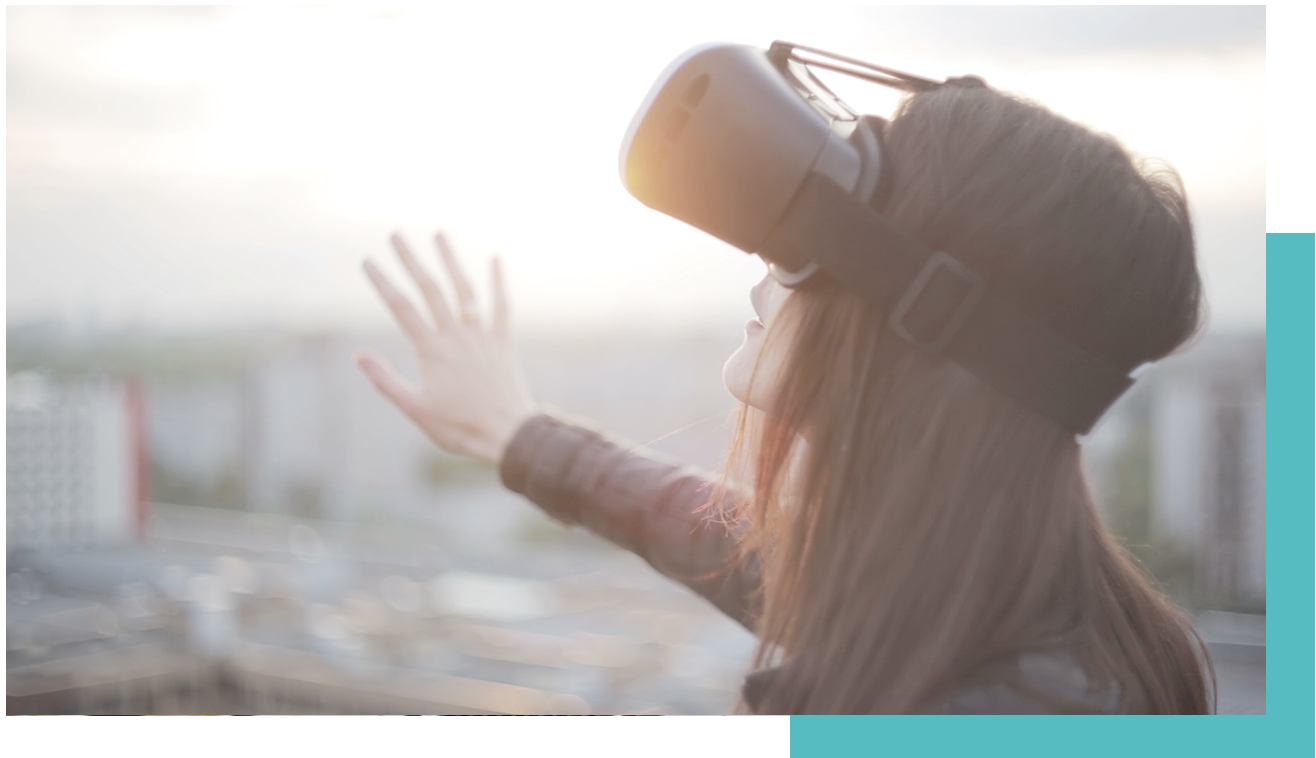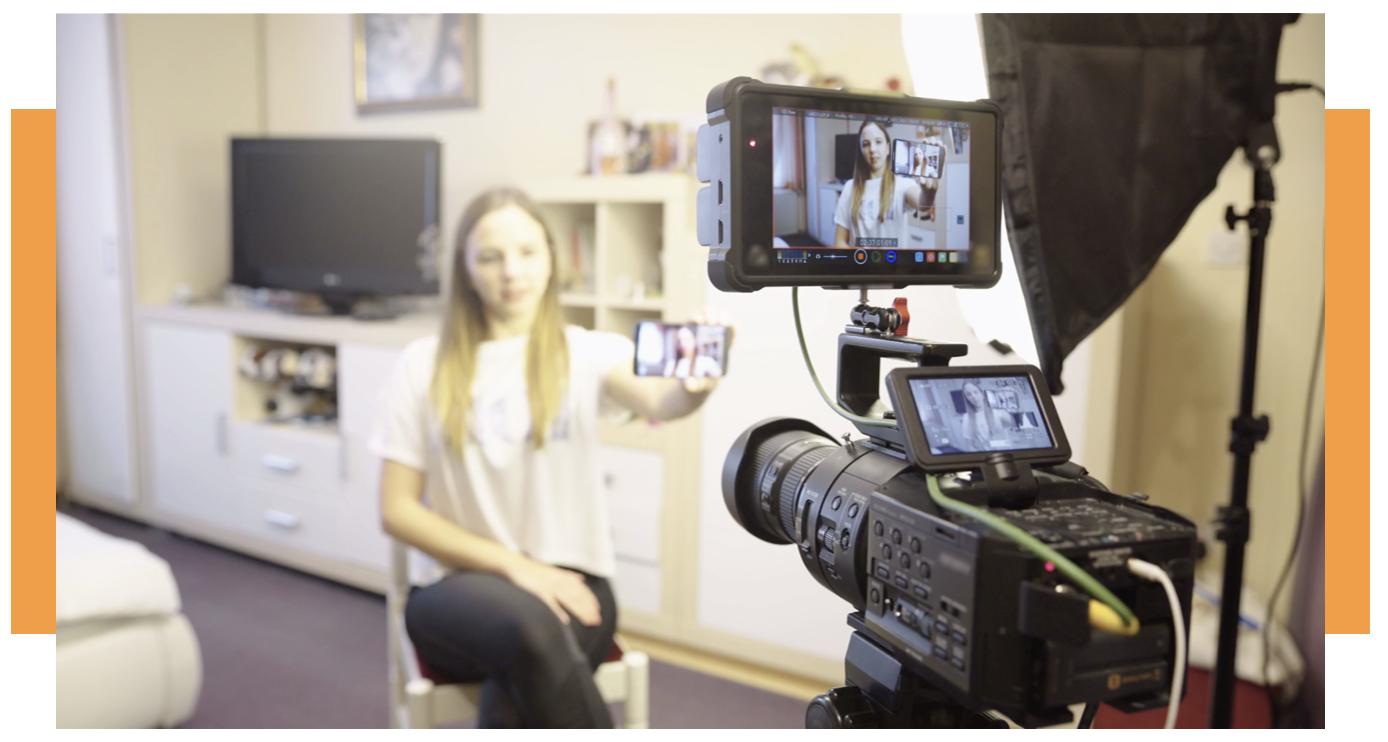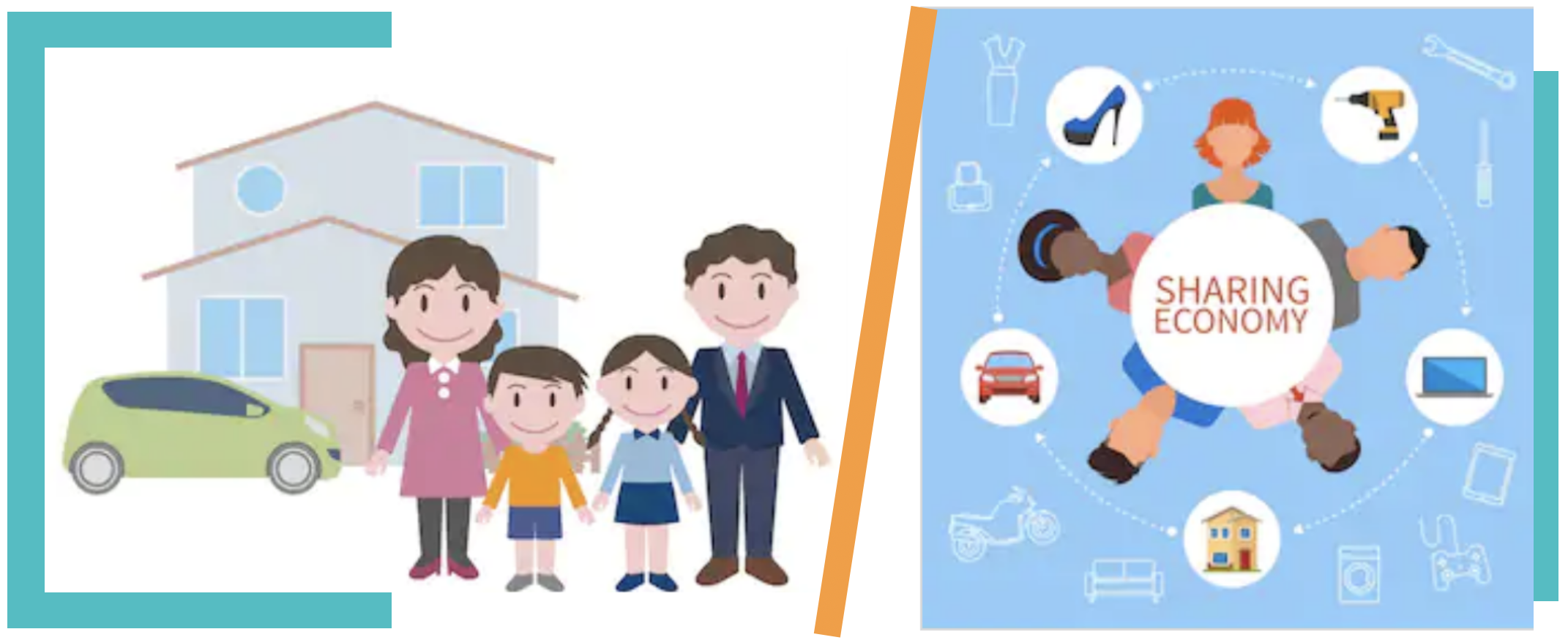The Millennial Mindset: [10 Factors] That Drive Millennials’ Consumer Behaviour
Marketing to Millennials requires an understanding of the millennial mindset. In this article I will take you through ten factors that affect the millennial mindset and shape their consumer behaviour. If you have landed on this page, I am guessing that you are a marketer, a business owner, or even recruiter, trying to figure out how to break the millennial code. If you haven’t already done so, be sure to watch “The Millennial Disruption” documentary. In this article, I will expand on some of the topics that I discuss in “The Millennial Disruption”, so you can think about how to better communicate with and attract millennials.
1- Abundance of choice

There has never been as much choice available to consumers as there is today. Having choice feels so natural to the digital native generation, as they grew up with a lot more options than previous generations.
At times, this level of abundance can be more confusing than being a positive thing. In most categories, there are too many similar products that do not stand out from the competition. So, millennials will happily make comparisons and drop a brand that doesn’t “feel right” to them.
Also, millennials are no longer limited by time and space in the same way that their parents and grandparents were. They can order a product directly from another continent if they wish and do not have to rely on a brand’s sales staff to provide them with information. They want this information available to them quickly and easily, and preferably in an audio-visual form.
The level of abundance that millennials experience today can be a blessing for brands and business owners, as well as a challenge. It can be positive, because it creates an opportunity for your brand to both innovate and set itself apart from the rest. With all your competitors sounding much the same, a distinctly different voice can really stand out. And it can be a challenge, because even if you have something unique to say, it’s hard to break through all the noise. This creates a real challenge for marketers and business owners. So, step one is to actually be different. Step 2 is to learn how to communicate with them. So read on to learn about what makes millennials tick.
2- Speed of Change
The second factor that impacts millennials’ consumer behaviour is the Speed of Change. They have learnt to adapt to constant changes and upgrades to their favourite products. As changes are made in technology, millennials seem to have no difficulty staying on top of constant upgrades. They quickly learn everything they need to know in order to use them in their daily lives. Emerging technologies should be more of a curiosity and a tool that increases efficiency, than a hassle or something to be feared.
An even more interesting observation on this point is that they don’t rely on official communications or manufacturers’ user guides. Instead, they turn to their trusted influencers online to maintain a seamless experience and learn the new features and benefits of every new release.
Young people tend to be more open and comfortable with change because they are so used to it. In contrast, the older generations grew up with much longer gaps between each set of technological updates. This makes it harder for them to adapt to the constant changes in today’s fast-paced environment. For example, when vinyl records were around, they lasted a long time. Then it took quite some time before cassettes turned into CDs. VHS was around for a long time before DVDs were introduced.
Previous generations were more likely to hold on to things for longer; but for the digital natives, constant change is a given. Therefore modern consumers are less likely to get attached to their gadgets, apps and software. At the same time, the combination of speed and abundance has led to an expectation for instant access. Overall, this tendency makes millennials less loyal as customers, unless your brand is able to address at least most of the issues that we raise in this article.
3- Peers vs. Seniors (AKA the influencer culture)
In the previous section, we saw how some influencers are bridging the communication gap between new product releases and user experience in many of the markets. In many cases, the Influencers’ content is much more in-depth and more easily digestible than the more formal videos and manuals that companies release (if they do so at all).

The impact of influencer culture comes in many shapes or forms. When we talk about this subject, you need to bear in mind that anyone can be an influencer on social media, whether you have a following of 500 people or 50 million people; as long as those people trust your opinion and your choice, you influence their decision making. Think about your daughter’s best friend, who posts a picture of herself wearing a cute little dress. If only ten people comment asking her where the dress is from, that’s ten people whose attention has been hacked and diverted from massive brands that have never had to compete with someone with 500 followers before. Now, they are having to compete against hundreds of thousands of them.
Many brands in the past had a huge advantage thanks to generational sales. Men brought their sons and grandsons to the same tailors and barbers for generations. Women bought the same fragrances and makeup brands as their mothers did. If you were Dior and Lancome, you didn’t have competition from Huda Kattan and Zoella on Instagram. If you were GQ or Vanity Fair, you didn’t face competition from Gary Vaynerchuk, Tim Ferris, Tom Bilyeu and Marie Forleo.
This couldn’t be further from reality for the younger generation. Not only are they less likely to be impacted by their parents and traditional media, millennials (and Gen Z) have actually reversed this role. In fact, it is much more common for young people to introduce their seniors to brands that they discover online. So they are now even impacting the purchasing decision of the previous generations.
Also, being more fluent with technology and social media means that they may get asked to help older people with their devices. This reverses the psychology of perceived wisdom in society. It used to be that with age you were deemed to have more wisdom. The younger generations looked up to their seniors for their input, but this no longer seems to be always the case, at least when it comes to technology and social media.
4- Diversity
Millennials are the most diverse group in modern history. In the US, only 56% of millennials are white, compared to Baby Boomers, 73% of whom are white. They are more tolerant of diverse groups than the older generations (47% vs. 19%). Since many large organisations are still run by Gen Xers and Baby Boomers, they have not fully adapted to the scale of diversity that millennials expect.


Diversity impacts consumer behaviour in several ways. This also depends on what kind of diversity we are looking at. For example, if we consider racial diversity and the impact of immigration, it’s worth bearing in mind that when immigrants enter a new society, they don’t have a sense of attachment to the native brands. So, they do their own research instead and try to find out what works for them. They then pass this attitude onto other people in society, which can dilute the impact of heritage brands.
Another aspect of diversity is gender and sexual orientation, which is becoming more prevalent and a topic of discussion among millennials. Imagine a heritage luxury brand that has always portrayed a heterosexual image in their adverts, with a classic view of gender stereotypes. The man looking buff and the woman looking highly sexualised. When the man wears a certain aftershave, the woman (or women) can’t help themselves and give into their sexual urges. In many cases, it is even implied that this is a secret affair. Such an advert implies so many assumptions about human sexuality and gender roles that can easily alienate anyone who doesn’t identify with such a preconceived image. And increasingly, this includes a greater number of the younger generation.
Therefore, diversity comes in many shapes and forms, ranging from language, accent, and culture, to race, gender, age, occupation, and mental and physical abilities, so brands need to take a step back and approach their communication with an open mind and be much more inclusive.
5- Career and Education
Young people’s educational habits are changing rapidly. More people than ever before are questioning the value of formal education. After all, universities are traditional structures and millennials are naturally wary of them. Many millennials prefer to learn at their own pace. Thanks to the proliferation of digital resources, which can be very affordable, they can now achieve this.

Also, the Internet and connectivity has allowed them to reimagine how they work. They are able to experience a different level of productivity, if they are motivated to do so. For example, the popularity of Tim Ferriss’ bestselling book, The Four Hour Work Week, and many other similar types of content are a clear indication of how the millennials’ culture is shifting.
At the same time, in many work environments, formal education is no longer guaranteed to get you a highly paid job. In many cases, by the time students leave school, their education is essentially out of date. One example of this is in marketing. Social media marketing and a modern approach to content creation are both very hard to learn at school. The fast-changing nature of Social Media platforms means that only true practitioners will succeed in those areas. There simply is no time for theory and school exams.
Herein lies a window of opportunity for brands and business owners to create content that will help their audience to learn more and gain an education that will help them in life.
6- Environmental Factors
One of the biggest problems of our generation is climate change and the environmental crisis. As a business, it’s important that you are highly tuned into this and care for the environment. But it’s also super important that you communicate your care and passion for the environment with your audience.
Many companies have little to say about this topic, because sustainability and environmental factors aren’t built into their core DNA. It’s hard to shout about something in your marketing communications if you aren’t doing it yourself. So you will need to take a step back and review how sustainability can become a core part of your company objectives. For many fashion brands and many other consumer brands, this goes against their very business model.

The truth is that most people, especially in wealthier countries, simply consume too much. This culture of consumerism which was popularised after WWII did great things for the economy. The more people buy, the more the economy grows. The downside of this is that it means higher levels of both production and waste, with simply not enough room to dispose of things.
The boom of consumerism was great for an era, but that era is now over. We need new ways of building our economy that won’t require us to destroy our planet. If your company can show the millennial generation that it is committed to tackling this issue in a meaningful way, then you will have an audience among this generation.
7- Economic Climate
Millennials are the only generation after World War II that are financially worse off than their parents,
as I’ve mentioned in The Millennial Disruption documentary. 
Although the economy and employment have climbed back from the worst of the recession in the past decade, millennials are still more likely to be in poverty than most baby boomers and Gen Xers were at a similar age.
This has a direct effect on businesses as it means that millennials are more likely to be price-sensitive and feel the need to look for a lot of information before they buy a product.
Baby boomers experienced the rise of the middle classes, which was a much-needed economic boost after the war period. For millennials things are different. We may well be on the verge of seeing a wider divide between the rich and the poor. In fact, the middle classes, in the traditional sense of the word, are disappearing.
Although there is a group of affluent millennials out there, competition for their attention is fierce. Therefore it is super important for your brand to clearly communicate the value that you are able to bring to the modern consumer.
8- Experience/Access vs. Ownership
A 2017 study by Goldman Sachs showed that millennials are less likely to make big purchases. “It’s not just homes: Millennials have been reluctant to buy items such as cars, music and luxury goods. Instead, they’re turning to a new set of services that provide access to products without the burdens of ownership, giving rise to what’s being called a ‘sharing economy’.”

If they can gain access to a product or service on a subscription/leasing model, they don’t feel the need to pay for full ownership. For example, it is much more common to have a subscription for applications and software, because it means you will benefit from the incremental updates. Even with things such as music and films, why would you buy, when they are available on the “cloud” and you can access them via streaming anytime you wish.
This “cloud-based” mentality and attitude is slowly making its way into all aspects of our purchasing behaviour. This is a very different mindset to the previous generations who were used to “owning” vinyl records, cassettes, DVDs, books and more. It’s another cause of behavioural change which allows the modern consumer to become less attached to brands. Since they haven’t bought a product or service outright, they can always change their mind at any moment, as well as be on the lookout for something better.
The younger generation also prioritises experiences over objects. As a brand, you may want to think about how you can present your products or services in terms of the experience that they will bring, rather than just highlighting their benefits and features. This is why I emphasise heavily on “lifestyle” related content while working with our clients.
9- Health and Wellbeing
Another area where millennials are making a change is in the world of health and wellness. Instead of focusing on healthcare in the traditional sense and treating medical issues as they arise, millennials gravitate towards wellness and prevention.

They are also a lot more open to talking about mental health, which is a huge issue for the younger generation. This is down to the big impact that the relentless speed of change and the pressure of social media can have on them.
In recent years, meditation and mindfulness have become increasingly popular and this is now becoming a significant industry that’s attracting the younger generation. According to Goldman Sachs, wellness is the one area where millennials are still willing to spend their money on compelling brands.
So when it comes to your digital marketing and content strategy, this is something that you can really explore. Many marketers make the mistake of thinking that all of their content should be about their product or service. But there are so many interesting tangents that you can now explore. Mental health and health and wellness are generally a universal subject and pretty much any brand can explore it from their own point of view. Whether you sell musical instruments, cars, financial services or makeup and jewellery, I can think of hundreds of ways that health and wellness can be incorporated into your content.
10- Entertainment
 Factor number ten, and possibly the most important one for brands, is entertainment. Understanding how millennials are entertained in the digital era is crucial to your communication with them. The digital native generation has a vast array of entertainment options at its fingertips. One of the most notable things that has changed in the past two decades is how prevalent audio-visual content is in our lives.
Factor number ten, and possibly the most important one for brands, is entertainment. Understanding how millennials are entertained in the digital era is crucial to your communication with them. The digital native generation has a vast array of entertainment options at its fingertips. One of the most notable things that has changed in the past two decades is how prevalent audio-visual content is in our lives.
In the past, companies spent a good deal of their budget on television and print advertisements. This allowed them to reach large groups of people quickly. It worked because many consumers relied on television, radio and magazines as their main source of entertainment and information. Consumers used to watch much more television and actually sat through the advertisements.
The rising popularity of streaming services has created behavioural patterns, such as “binge-watching”, which leaves no room for advertising. Of course, you can advertise on social media, but unless you have very good content to go along with it, you are competing with hundreds of other influencers who are fighting for the same audience.
About the Author:
Somi Arian is a multi-award winning filmmaker, entrepreneur, speaker, Founder of Smart Cookie Media, and Co-Founder of Career Drive. Somi’s Documentary, “The Millennial Disruption” was referred to as “disruptive in its very approach” on BBC5 Live, and features industry leaders from The Economist, Marie Claire, Bentley, Steinway, Jaguar Land Rover, Daniel Priestley, and Gary Vaynerchuk. Somi was chosen as a LinkedIn Top Voice and her thought leadership events attract C-Level executives of huge companies such as BBC, Channel4, HSBC, Silicon Valley Bank, Jimmy Choo, Ralph Lauren, Financial Times, Vanity Faire, Morgan Stanley and many others. Somi, and her team of Smart Cookies, have created content for brands such as Bentley, Steinway, Funding Circle, En Route, WMF, and Savile Row Bespoke, to name a few.
